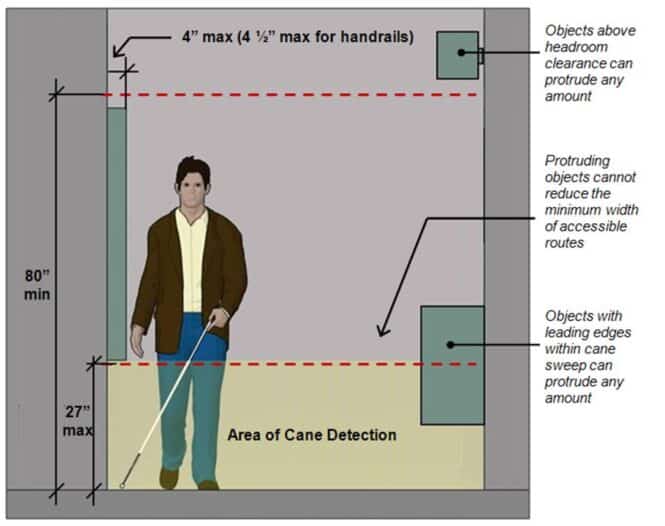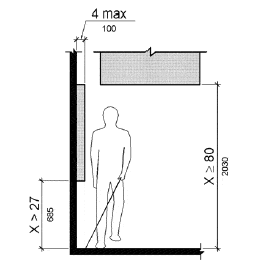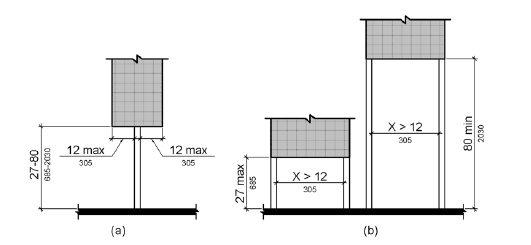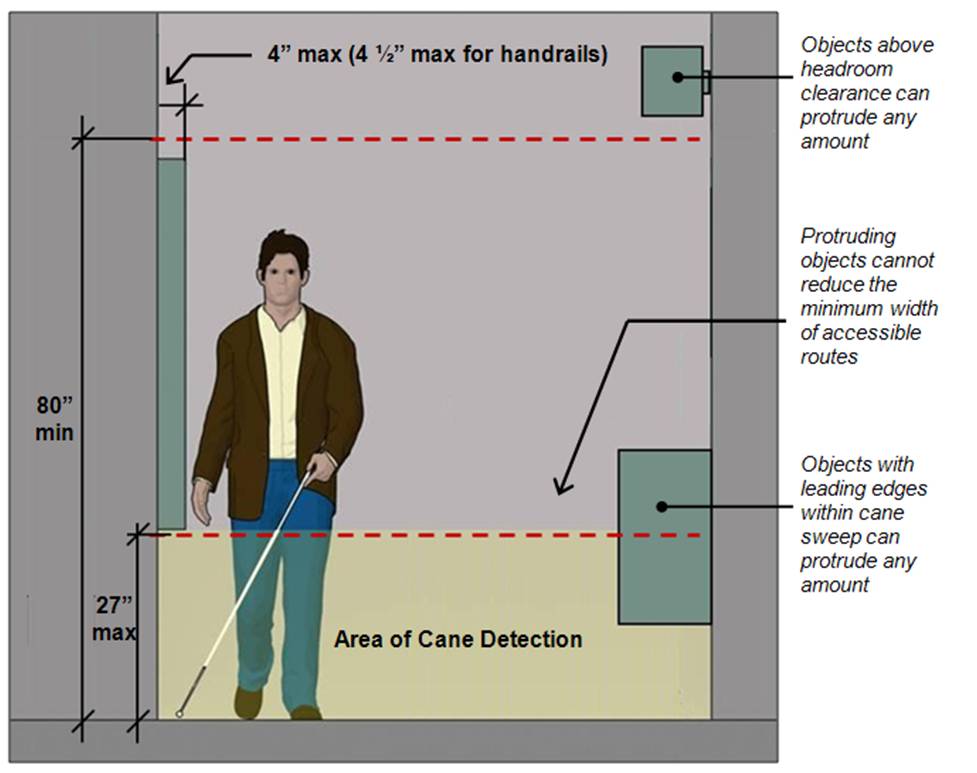
ADA Brief on Wall-Mount Kiosks
This goes for any “interactive” display and/or kiosk mounted to the wall.
Quick Guide
Anything that is mounted on a wall along a travel (or circulation) path must comply with protruding object requirements. If you have a wall-mounted kiosk or a digital sign and its leading edge is between 27” and 80” above the finish floor, it must not protrude more than 4” from the wall.
If it does, then some sort of barrier or other object (a shelf, a planter, etc.) must be placed below it or to the sides of it that has a leading edge at 27” or below such that the kiosk does not protrude more than 4” from the leading edge of that barrier or object.
The provisions for protruding objects are in §307; the most relevant for your needs might be in §307.2. And you might find our technical guide on Protruding Objects to be useful.
307 Protruding Objects
307.1 General
Protruding objects shall comply with 307.

Wall mount kiosk ADA
307.2 Protrusion Limits
Objects with leading edges more than 27 inches (685 mm) and not more than 80 inches (2030 mm) above the finish floor or ground shall protrude 4 inches (100 mm) maximum horizontally into the circulation path.
EXCEPTION: Handrails shall be permitted to protrude 4½ inches (115 mm) maximum.
Advisory 307.2 Protrusion Limits. When a cane is used and the element is in the detectable range, it gives a person sufficient time to detect the element with the cane before there is body contact. Elements located on circulation paths, including operable elements, must comply with requirements for protruding objects. For example, awnings and their supporting structures cannot reduce the minimum required vertical clearance. Similarly, casement windows, when open, cannot encroach more than 4 inches (100 mm) into circulation paths above 27 inches (685 mm).
307.3 Post-Mounted Objects
Free-standing objects mounted on posts or pylons shall overhang circulation paths 12 inches (305 mm) maximum when located 27 inches (685 mm) minimum and 80 inches (2030 mm) maximum above the finish floor or ground. Where a sign or other obstruction is mounted between posts or pylons and the clear distance between the posts or pylons is greater than 12 inches (305 mm), the lowest edge of such sign or obstruction shall be 27 inches (685 mm) maximum or 80 inches (2030 mm) minimum above the finish floor or ground.
EXCEPTION: The sloping portions of handrails serving stairs and ramps shall not be required to comply with 307.3.

People with vision impairments often travel closely along walls which can provide wayfinding cues sometime called a “shoreline.” Objects mounted on walls, partitions, columns, and other elements along circulation paths can pose hazards unless their projection is limited. Those with leading edges that are within cane sweep (27″ high maximum) or that provide minimum headroom clearance (80″ minimum) do not pose hazards and can protrude any amount.
Limits of Protruding Objects
More Articles





